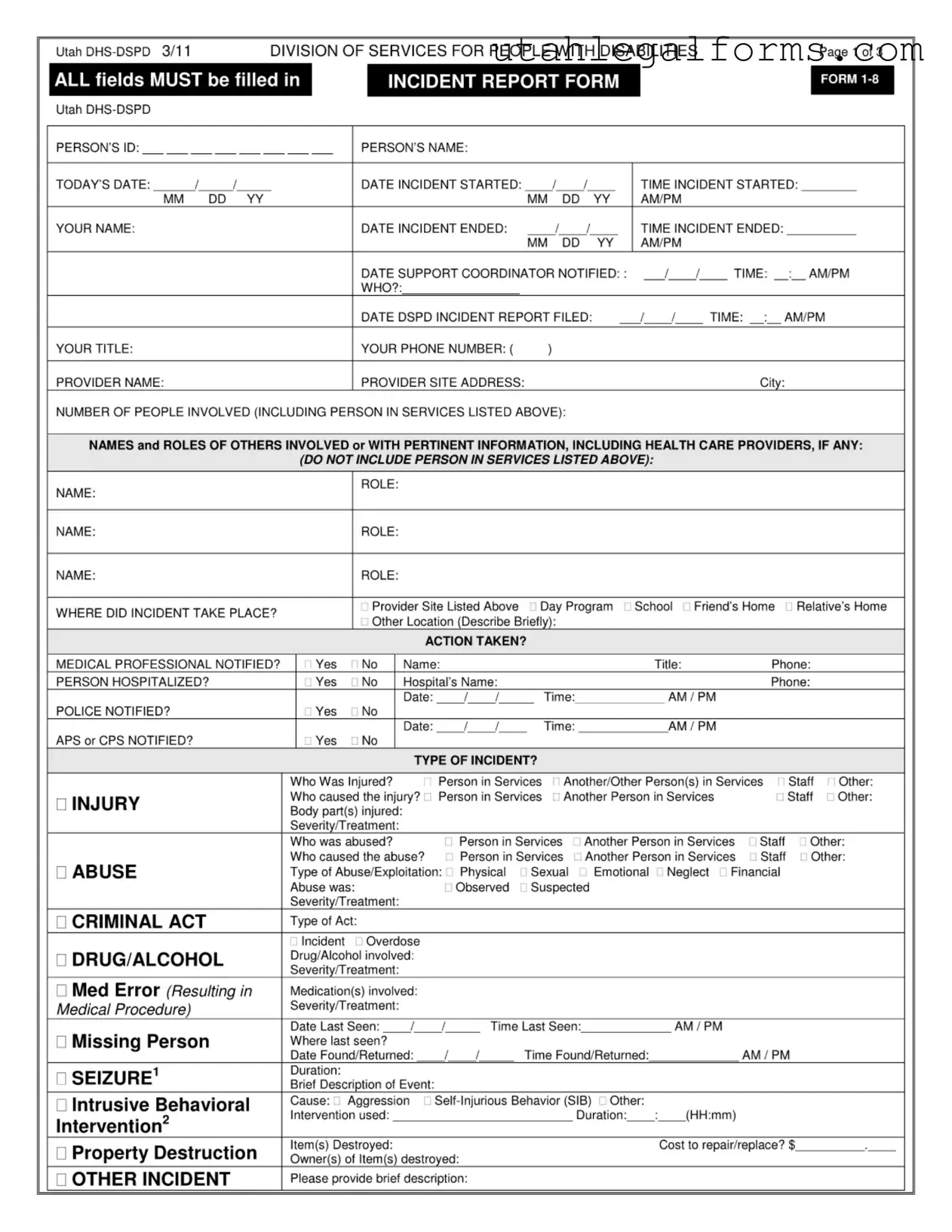Fill a Valid Utah 1 8 Template
The Utah 1 8 form is an essential document used to report incidents involving individuals receiving services from the Division of Services for People with Disabilities (DSPD) in Utah. This form ensures that all relevant details about an incident are documented thoroughly, which is crucial for the safety and well-being of those involved. Completing the form accurately helps maintain accountability and provides necessary information for follow-up actions.
Ready to fill out the form? Click the button below to get started!
Access Utah 1 8 Now
